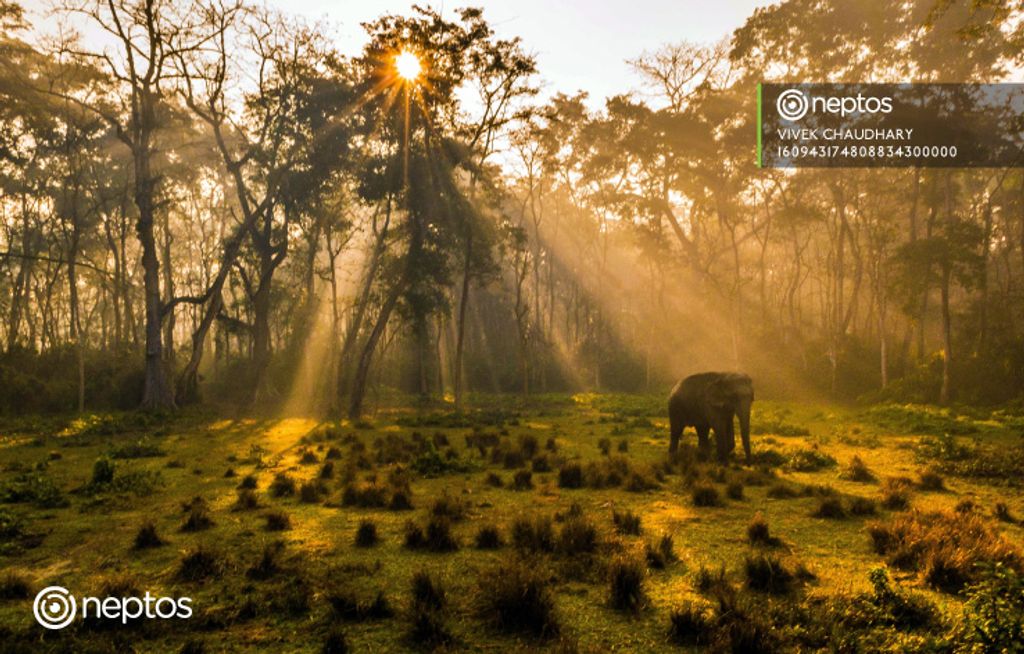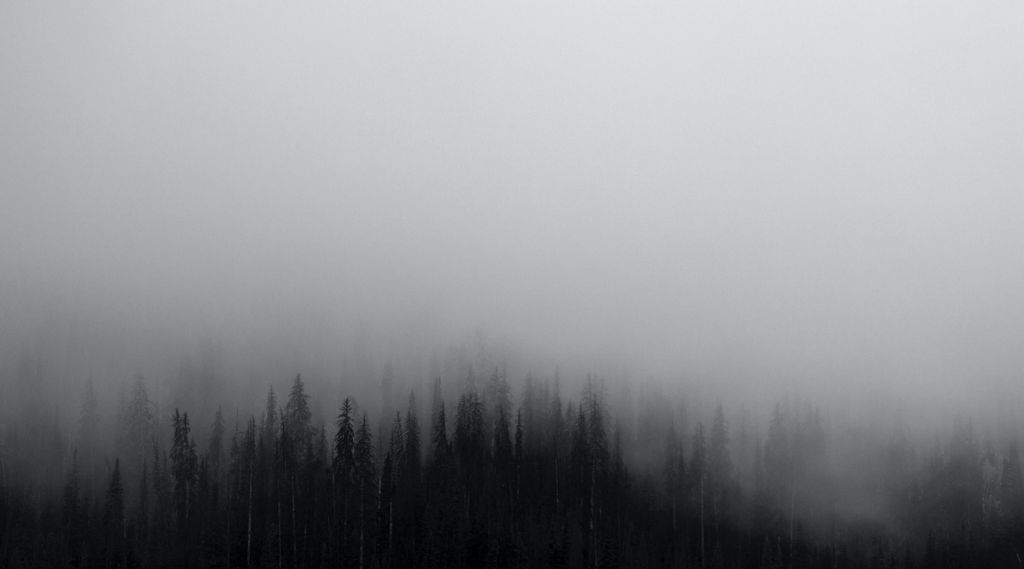7 Tips to improve your Landscape Photography Instantly - A.P. Tolang

Landscape photography has inspired many great photographers to adopt photography as their full-time profession. If you look at other photographers and hear their story, then most of the time, there's always nature or a place that has influenced them to hold the camera and start their photography journey. Though they may be profound in other genres, they have always admired the beauty of nature and how it has motivated to become the person who they are at the moment.
On the same note, we have come up with Ambir Tolang aka Wang Li, who has a similar story to share with us along with his work and some pro tips to improve landscape photography. Let's hear it from his own words but before that let me share a story about his nickname "Wang Li".
A.P. Tolang, a passionate and self-taught Landscape photographer has several years of working experience in South Korea. During his tenure, he often used the name "Wang Li" to represent himself and his work in different agencies. Thus, people liked his work and often address him with the same name. Since then, he is in love with this name and has used it everywhere. Nowadays, he is popular with the same name even in his home country, Nepal.
Alright, that was a short story behind his name Wang-Li. Let's move on with his brief introduction and tips to enhance landscape photography skills.
A.P. Tolang: I am always fond of traveling to different places and collect those magical places through my camera. I have started my journey since my college life in Nepal but build up my career and professionalism from South Korea. Throughout learning photography, I have engaged myself in the landscape genre as it makes me comfortable to collect those moments. And those nature flow images gives me lots of good vibes, internally.
I'm currently based on Lalitpur, Kathmandu but do a lot of travel to capture the essence of nature. Last year, I have travelled siding to collect wild honey bee harvesting, Mardi Himal to get the beautiful landscape of Annapurna range and Tsho Rolpa Glacier Lake. Some of my work has been featured in National daily (Nagarik News) and an International Magazine (Gwangjunews).
As landscape means to collect nature, in the first place you need to determine the place and time of your shoot, then you can plan what to shoot.
Here are some tips.
Place and Time
Time and Place plays a vital role in Landscape photography. The same place has different environments and surroundings which is directly affected by the Time, you determine to shoot. Though, orange, red, or pink colors give warm feelings and emotions to the viewers but don't just rely on it. As a photographer, you have to experiment with different things, try shooting at different timing of the same place.
 A.P. Tolang via Neptos Canon EOS 6D Mark II, Exposure – 1/320, Aperture – 16, Focal Length – 28.0 mm, ISO – 800, Flash – off
A.P. Tolang via Neptos Canon EOS 6D Mark II, Exposure – 1/320, Aperture – 16, Focal Length – 28.0 mm, ISO – 800, Flash – off
This image was taken on daylight. If it was taken in the afternoon, the mood and tone of the image would be different. It would be something like this.
 A.P. Tolang via Neptos, Canon EOS 6D Mark II, Exposure – 10, Aperture – 6.3, Focal length – 30.0 mm, ISO – 250, Flash - Off
A.P. Tolang via Neptos, Canon EOS 6D Mark II, Exposure – 10, Aperture – 6.3, Focal length – 30.0 mm, ISO – 250, Flash - Off
Though the places are different, I believe you get my point.
Normally, I like to shoot landscape photographs in the evening time or golden hour. But trying different timing and place will not only enhance photography skills, but it will also improve the ability to shoot in different lighting conditions.
Weather Condition
Weather and climate is another important aspect that every landscape photographer should keep in mind before going for a photo shoot. If you are a frequent traveler and love to go to different places then you must study the weather and climate condition of that place.
If you are planning for a trip to Mustang and hoping to find greenery in the winter season, then it will be a total waste. But if you do little research about the place, then you can plan something unique and different that other photographers have missed.
 A.P. Tolang via Neptos, Canon EOS 6D Mark II, Exposure – 1/160, Aperture – 7.1, Focal Length – 200 mm, ISO – 100, Flash – Off
A.P. Tolang via Neptos, Canon EOS 6D Mark II, Exposure – 1/160, Aperture – 7.1, Focal Length – 200 mm, ISO – 100, Flash – Off
This photo was taken on the way to Manaslu circuit, Gorkha, Nepal. As I was passing by the route, I see this majestic mountain and I couldn't stop clicking this magnificent view.
Gears
If you are a frequent traveler then you must have a great backpack that allows you to put all of your stuff in a single place. Likewise, you must be sure that it's rainproof & dustproof. Once you start traveling, you have to be prepared for every kind of situation, otherwise, you may end up losing your hard-earned equipment. Similarly, put extra batteries in your backpack along with Lens, Filters, Tripod, and other important accessories. As a landscape photographer, you may have to walk for several days, so a pair of good gripped shoes will help you a lot. Last but not the least, I carry a compass along with me, it helps me to find the sunrise and sunset locations. If you don't have a compass, then use your mobile apps, if not download it from the play store.
 A.P. Tolang via Neptos, Canon EOS 6D Mark II, Exposure – 1/400, Aperture – 5, Focal Length – 200.0 mm, ISO – 800, Flash - Off
A.P. Tolang via Neptos, Canon EOS 6D Mark II, Exposure – 1/400, Aperture – 5, Focal Length – 200.0 mm, ISO – 800, Flash - Off
Lens – Wide Lens & Zoom Lens preferred
Whether it's a wide-angle lens or zoom lens, there is an insignificant role of this lens to create marvelous shots in landscape photography. The wide-angle lens is perfect for creating depth of field and clicking sharp images, whereas, Zoom lens gives the ability to change the angle of view quickly and without changing the lens. Thus, it helps to click photos quickly and efficiently.
I prefer both wide lenses and zoom lenses. It depends upon the place I'm visiting. If the place is somewhere near, then I go for both the lens but if the journey is tiresome and takes days to go, then I prefer a zoom lens as it makes my trip lighter.
 A.P. Tolang via Neptos, Canon EOS 6D Mark II, Exposure – 1/320, Aperture – 4, Focal Length – 200 mm, ISO – 100, Flash – Off
A.P. Tolang via Neptos, Canon EOS 6D Mark II, Exposure – 1/320, Aperture – 4, Focal Length – 200 mm, ISO – 100, Flash – Off
This image was taken on the same route to the Manaslu circuit, Gorkha, Nepal. Since my main subject was in a distant location, I have used my zoom lense here.
 A.P. Tolang via Neptos, Canon EOS 6D Mark II, Exposure – 1/100, ISO – 100, Flash - Off
A.P. Tolang via Neptos, Canon EOS 6D Mark II, Exposure – 1/100, ISO – 100, Flash - Off
It was taken on Cheseong lake, Chum valley, Gorkha, Nepal. As you can see, I have used a wide-angle lens here. The perks of carrying both lenses will help you to take a different kind of shots at the same place and time.
If your wondering about the lens, then I have used Canon EF 70-200mm Zoom lens and Tokina 16-28 mm wide-angle lens.
Filters
Filters avoid unwanted lights and give a natural tone to the photographs. If you are a landscape photographer, then you must own a good set of filters. There are several types of filters available in the market, built for a specific purpose. So, you need to figure out for what purpose you need to buy filters.
Normally, I prefer Solid Neutral Density Filters (ND) to reduce light all across wavelengths. The good thing about the ND filter is it preserves the natural light and colors and works great in bright light conditions. This kind of filter is great for shooting long exposure photography and creating shallow depth of field in the photographs. Likewise, there's Graduated Neutral Density Filters (GND), Reverse Graduated Neutral Density Filter (RGND), Circular Polarizer, and light pollution filter.
Here's a shot where I have used ND 1000 Filter. The benefit of using the ND 1000 filter is, it makes your image clear and smooth. If you're low on budget, then I suggest you buy Hoya ko ND 500 or Kenko Smart Filter CPL Slim 58 mm. It won't cost you much and it's a perfect starter for a beginner photographer.
 A.P. Tolang via Neptos, Canon EOS 6D Mark II, Exposure – 15, Aperture – 22, Focal Length – 16.00 mm, ISO – 100, Flash - Off
A.P. Tolang via Neptos, Canon EOS 6D Mark II, Exposure – 15, Aperture – 22, Focal Length – 16.00 mm, ISO – 100, Flash - Off
Tripod
Tripod is a friend to me, it always supports me and my camera in every situation. Whether I'm about to use a longer lens or I'm stuck with height adjustment, tripod always comes to rescue. Likewise, it helps to avoid shakes and vibration and takes sharp images. It gives more stability in windy weather and gives you enough time for photo composition. On the other hand, it’s a great tool to shoot long exposure shots, panoramas, and multiple exposures.
If you have both wireless remote and tripod then half of your work is already done. You just need to wait for the perfect moment and boom. Tripod is a very useful tool in the world of photography. It makes the life of a photographer pretty easy. So, if you don't have a tripod or hesitate to carry it around then make the habits of carrying it wherever you go.
 A.P. Tolang via Neptos, Canon EOS 70D, Exposure – 30, Aperture – 8, Focal Length – 17.0 mm, ISO – 100, Flash - Off
A.P. Tolang via Neptos, Canon EOS 70D, Exposure – 30, Aperture – 8, Focal Length – 17.0 mm, ISO – 100, Flash - Off
Remote
Whenever I travel, I always carry a wireless remote with me. It adds extra flexibility while shooting long exposure shots as it avoids vibration and shakes. You can use the wireless remote in various cases. Most of the time I use remote to take long exposure shots and sharp images, but it’s a great tool to go for self-portraits, macro photography, high-speed photography, and wildlife shots.
 A.P. Tolang via Neptos, Canon EOS 6D Mark II, Exposure – 1/400, Aperture – 8, Focal length – 200 mm, ISO – 100, Flash – Off
A.P. Tolang via Neptos, Canon EOS 6D Mark II, Exposure – 1/400, Aperture – 8, Focal length – 200 mm, ISO – 100, Flash – Off
If you're quite low on budget then I don't recommend you buy this for now, but if you have extra cash and willing to invest in your gears then, go for it. As it ensures safety to your shots and helps to click the exact moment. Likewise, it reduces vibration and keeps your hands free for other purposes. Besides, it allows you to click distance shots and it opens the gate for creative experiments.
You can find my other work at Neptos profile, my Instagram, and at 500px.
If you have any queries regarding these tips or need any information about landscape photography, you can contact me via the above address. Likewise, I would like to thank Neptos team for covering this article and for coming up with such a great platform where we can sell images all related to Nepal.
Comments(1)

Subscribe to Our Blog
Stay up to date with the latest marketing, sales, and service tips and news.



Nice picture